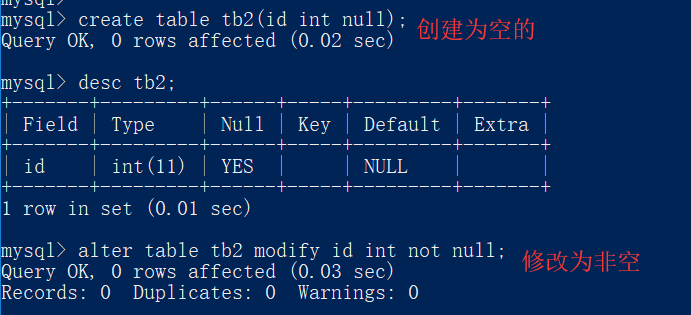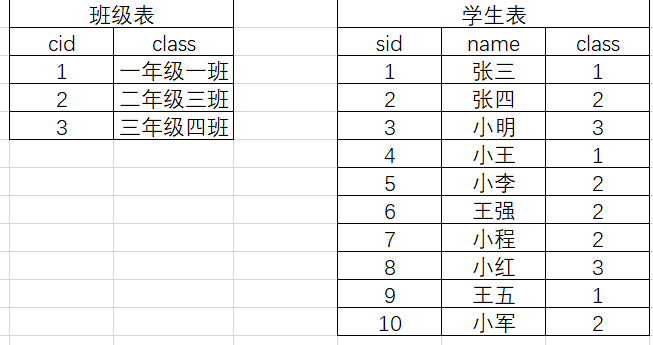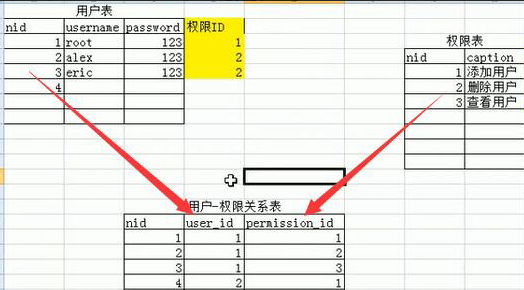第一:完整性约束介绍
为了防止不符合规范的数据进入数据库,在用户对数据进行插入、修改、删除等操作时,DBMS自动按照一定的约束条件对数据进行监测,使不符合规范的数据不能写入数据库,以确保数据库中存储的数据正确性,有效性
第二:not null 和 default
是否为空,null 表示为空,非字符串
null:空 not null :非空
默认值,创建列时可以指定默认值,当插入数据时如果未主动设置,则自动添加默认值
create table tb1(
nid int not null defalut 2,
num int not null
)
示例一:空与非空


这里需要注意的,如果有数据的话,是不能进行修改的
示例二:default

==================default==================== #设置id字段有默认值后,则无论id字段是null还是not null,都可以插入空,插入空默认填入default指定的默认值 mysql> create table tb3(id int default 1); mysql> alter table tb3 modify id int not null default 1;
第三:unique
unique:唯一约束
1,设置列级约束: mysql> create table part1( -> id int, -> name varchar(55) unique -> ); Query OK, 0 rows affected (0.02 sec) 2,设置表级约束: mysql> create table part2( -> id int, -> name varchar(55), -> constraint uk_name unique(name) -> ); Query OK, 0 rows affected (0.03 sec) 检测约束: mysql> insert into part2 values(1,'IT'); Query OK, 1 row affected (0.01 sec) mysql> insert into part2 values(1,'IT'); ERROR 1062 (23000): Duplicate entry 'IT' for key 'uk_name' mysql> add关键字增加唯一约束: mysql> alter table part1 add unique(id,name); Query OK, 0 rows affected (0.03 sec) Records: 0 Duplicates: 0 Warnings: 0 modify关键字删除或者增加唯一约束 mysql> alter table part1 modify id varchar(255) not null; Query OK, 0 rows affected (0.05 sec) Records: 0 Duplicates: 0 Warnings: 0 mysql> alter table part1 modify id varchar(255) not null unique; Query OK, 0 rows affected (0.03 sec) Records: 0 Duplicates: 0 Warnings: 0

create table service( id int primary key auto_increment, name varchar(20), host varchar(15) not null, port int not null, unique(host,port) #联合唯一或关键字唯一 ); mysql> insert into service values -> (1,'nginx','1.1.1.1',80), -> (2,'haproxy','2.2.2.2',80), -> (3,'mysql','3.3.3.3',3306) -> ; Query OK, 3 rows affected (0.01 sec) Records: 3 Duplicates: 0 Warnings: 0 mysql> insert into service(name,host,port) values('nginx','1.1.1.1',80); ERROR 1062 (23000): Duplicate entry '192.168.0.10-80' for key 'host'
第四:primary key
primary key:主键
#主键约束相当于非空约束和唯一约束。
#每个表只允许拥有一个主键,但是这个主键可以由一个数据或者多个数据列组成,这些列组合不能重复
#标准SQL允许给主键自行命名,但是对于Mysql来说自己的名字没有任何作用,总是默认名为PRIMARY
第一:not null+unique作为主键 mysql> create table part3( -> id int not null unique,----》主键 -> name varchar(20) not null unique -> ); Query OK, 0 rows affected (0.04 sec) mysql> desc part3; +-------+-------------+------+-----+---------+-------+ | Field | Type | Null | Key | Default | Extra | +-------+-------------+------+-----+---------+-------+ | id | int(11) | NO | PRI | NULL | | | name | varchar(20) | NO | UNI | NULL | | +-------+-------------+------+-----+---------+-------+ 2 rows in set (0.01 sec) 第二:在其中一个字段后用primary key mysql> create table part4( -> id int primary key,----》主键 -> name varchar(20) -> ); Query OK, 0 rows affected (0.02 sec) mysql> desc part4; +-------+-------------+------+-----+---------+-------+ | Field | Type | Null | Key | Default | Extra | +-------+-------------+------+-----+---------+-------+ | id | int(11) | NO | PRI | NULL | | | name | varchar(20) | YES | | NULL | | +-------+-------------+------+-----+---------+-------+ 2 rows in set (0.00 sec) 第三:在所有字段后单独定义primary key mysql> create table part5( -> id int, -> name varchar(20), -> constraint pk_name primary key(id)); 创建主键并为其命名pk_name Query OK, 0 rows affected (0.02 sec) mysql> desc part5; +-------+-------------+------+-----+---------+-------+ | Field | Type | Null | Key | Default | Extra | +-------+-------------+------+-----+---------+-------+ | id | int(11) | NO | PRI | NULL | | | name | varchar(20) | YES | | NULL | | +-------+-------------+------+-----+---------+-------+ 2 rows in set (0.00 sec) 多列做主键: mysql> create table service( -> ipaddr varchar(20), -> port char(5), -> service_name varchar(10) not null, -> primary key(ipaddr,port) -> ); Query OK, 0 rows affected (0.02 sec) mysql> insert into service values -> ('1.1.1.1','3306','mysqld'), -> ('2.2.2.2','80','nginx') -> ; Query OK, 2 rows affected (0.01 sec) Records: 2 Duplicates: 0 Warnings: 0 mysql> insert into service values ('2.2.2.2','80','apache'); ERROR 1062 (23000): Duplicate entry '2.2.2.2-80' for key 'PRIMARY' mysql>
第五:auto_increment
- #主键列自增长特性:如果某个数据列的类型是整型,而且该列作为主键列,则可指定该列具有自增长功能
- #mysql使用auto_increment来设置自增长,向该表插入记录时可不为该列指定值,由系统生成
#不指定id,则自动增长 mysql> create table tb5( -> id int primary key auto_increment, -> name varchar(20), -> sex enum('man','woman') default 'man' -> ); Query OK, 0 rows affected (0.02 sec) mysql> desc tb5; +-------+---------------------+------+-----+---------+----------------+ | Field | Type | Null | Key | Default | Extra | +-------+---------------------+------+-----+---------+----------------+ | id | int(11) | NO | PRI | NULL | auto_increment | | name | varchar(20) | YES | | NULL | | | sex | enum('man','woman') | YES | | man | | +-------+---------------------+------+-----+---------+----------------+ 3 rows in set (0.00 sec) mysql> insert into tb5(name) values('zzl'),('zl'); Query OK, 2 rows affected (0.00 sec) Records: 2 Duplicates: 0 Warnings: 0 mysql> select * from tb5; +----+------+------+ | id | name | sex | +----+------+------+ | 1 | zzl | man | | 2 | zl | man | +----+------+------+ 2 rows in set (0.00 sec) #指定id mysql> insert into tb5 values(4,'cyy','woman'); Query OK, 1 row affected (0.00 sec) mysql> insert into tb5 values(6,'cy','woman'); Query OK, 1 row affected (0.00 sec) mysql> select * from tb5; +----+------+-------+ | id | name | sex | +----+------+-------+ | 1 | zzl | man | | 2 | zl | man | | 4 | cyy | woman | | 6 | cy | woman | +----+------+-------+ 4 rows in set (0.00 sec) #对于自增的字段,在用delete删除后,再插入值,该字段仍按照删除前的位置继续增长 mysql> delete from tb5; Query OK, 4 rows affected (0.01 sec) mysql> select * from tb5; Empty set (0.00 sec) mysql> insert into tb5(name) values('zyc'); Query OK, 1 row affected (0.00 sec) mysql> select * from tb5; +----+------+------+ | id | name | sex | +----+------+------+ | 7 | zyc | man | +----+------+------+ 1 row in set (0.00 sec) #应该用truncate清空表,比起delete一条一条地删除记录,truncate是直接清空表,在删除大表时用它 mysql> truncate tb5; Query OK, 0 rows affected (0.01 sec) mysql> select * from tb5; Empty set (0.00 sec) mysql> insert into tb5(name) values('zzl'); Query OK, 1 row affected (0.33 sec) mysql> select * from tb5; +----+------+------+ | id | name | sex | +----+------+------+ | 1 | zzl | man | +----+------+------+ 1 row in set (0.00 sec)
第六:foreign key
通过下面的例子理解下foreign key(外键)

我们完全可以定义一个班级表
然后让学生表关联该表,关联方法即foreign key
eg:
#表类型必须是innodb存储引擎,且被关联的字段,即references指定的另外一个表的字段,必须保证唯一 create table class( cid int primary key, name varchar(20) not null )engine=innodb; #class_id外键,关联父表(class主键cid),同步更新,同步删除 create table student( sid int primary key, name varchar(20) not null, class_id int, constraint fk_name foreign key(class_id) references class(cid) on delete cascade on update cascade )engine=innodb; #先往父表department中插入记录 insert into class values (1,'一年级一班'), (2,'二年级三班'), (3,'三年级四班'); #再往子表student中插入记录 insert into student values (1,'张三',1), (2,'张四',2), (3,'小明',3), (4,'小王',1), (5,'小李',2), (6,'王强',2), (7,'小程',2), (8,'小红',3), (9,'王五',1), (10,'小军',2) ; #删父表class,子表student中对应的记录跟着删 mysql> delete from class where cid=3; mysql> select * from student; +----+-------+----------+ |sid | name | class_id | +----+-------+----------+ | 1 | 张三 | 1 | | 3 | 小明 | 3 | | 3 | 小王 | 1 | | 8 | 小红 | 3 | | 9 | 王五 | 1 | +----+-------+----------+ #更新父表class,子表student中对应的记录跟着改 mysql> update class set cid=3333 where cid=3; mysql> select * from student; +----+-------+----------+ |sid | name | class_id | +----+-------+----------+ | 1 | 张三 | 1 | | 3 | 小明 | 3333 | | 3 | 小王 | 1 | | 8 | 小红 | 3333 | | 9 | 王五 | 1 | +----+-------+----------+
找表中的关系:

分析步骤: #1、先站在左表的角度去找 是否左表的多条记录可以对应右表的一条记录,如果是,则证明左表的一个字段foreign key 右表一个字段(通常是id) #2、再站在右表的角度去找 是否右表的多条记录可以对应左表的一条记录,如果是,则证明右表的一个字段foreign key 左表一个字段(通常是id) #3、总结: #多对一: 如果只有步骤1成立,则是左表多对一右表 如果只有步骤2成立,则是右表多对一左表 #多对多 如果步骤1和2同时成立,则证明这两张表时一个双向的多对一,即多对多,需要定义一个这两张表的关系表来专门存放二者的关系 #一对一: 如果1和2都不成立,而是左表的一条记录唯一对应右表的一条记录,反之亦然。这种情况很简单,就是在左表foreign key右表的基础上,将左表的外键字段设置成unique即可
最后介绍三种对应的关系:
一对一
两张表:用户表和客户表
一对一:一个用户是一个客户,一个客户有可能变成一个用户,即一对一的关系
关联方式:foreign key+unique

#一定是user来foreign key表customer,这样就保证了: #1 用户一定是一个客户, #2 客户不一定是用户,但有可能成为一个用户 create table customer( id int primary key auto_increment, name varchar(20) not null, phone char(16) not null ); create table user( id int primary key auto_increment, user_name varchar(20) not null, customer_id int unique, #该字段一定要是唯一的 foreign key(customer_id) references customer(id) #外键的字段一定要保证unique on delete cascade on update cascade ); #增加客户 insert into customer(name,phone) values ('张三',13934341230), ('李四',15339326733), ('王五',18820016230), ('赵六',13721748029), ('周八,13721799962), ('蒋二',13403956369) ; #增加学生 insert into student(user_name,customer_id) values ('季度用户',3), ('月用户',4), ('月用户',5) ;
多对一(一对多):
见上面例子中的学生与班级
多对多:
用户权限关系:
一个用户可以有多个权限
一个权限可以供多个用户拥有

mysql> create table userinfo( -> nid int primary key auto_increment, -> name varchar(20), -> password varchar(55)); Query OK, 0 rows affected (0.04 sec) mysql> create table permission( -> nid int primary key auto_increment, -> caption varchar(55) -> ); Query OK, 0 rows affected (0.02 sec) mysql> create table user_to_permission( -> nid int not null unique auto_increment, -> user_id int not null, -> permission_id int not null, -> constraint fk_user foreign key(user_id) references userinfo(nid) -> on delete cascade -> on update cascade, -> constraint fk_permission foreign key(permission_id) references permission(nid) -> on delete cascade -> on update cascade, -> primary key(user_id,permission_id) -> ); Query OK, 0 rows affected (0.03 sec) mysql> insert into userinfo(name,password) values('root','123'); Query OK, 1 row affected (0.01 sec) mysql> insert into userinfo(name,password) values('alex','123'); Query OK, 1 row affected (0.00 sec) mysql> insert into userinfo(name,password) values('eric','123'); Query OK, 1 row affected (0.01 sec) mysql> insert into permission(caption) values('add user'),('delete user'),('select user') -> ; Query OK, 3 rows affected (0.01 sec) Records: 3 Duplicates: 0 Warnings: 0 mysql> select * from userinfo; +-----+------+----------+ | nid | name | password | +-----+------+----------+ | 1 | root | 123 | | 2 | alex | 123 | | 3 | eric | 123 | +-----+------+----------+ 3 rows in set (0.01 sec) mysql> select * from permission; +-----+-------------+ | nid | caption | +-----+-------------+ | 1 | add user | | 2 | delete user | | 3 | select user | +-----+-------------+ 3 rows in set (0.00 sec) mysql> insert into user_to_permission(user_id,permission_id) values(1,1),(1,2),(1,3),(2,3),(3,3) -> ; Query OK, 5 rows affected (0.01 sec) Records: 5 Duplicates: 0 Warnings: 0 mysql> select * from user_to_permission; +-----+---------+---------------+ | nid | user_id | permission_id | +-----+---------+---------------+ | 1 | 1 | 1 | | 2 | 1 | 2 | | 3 | 1 | 3 | | 4 | 2 | 3 | | 5 | 3 | 3 | +-----+---------+---------------+ 5 rows in set (0.01 sec) mysql>
